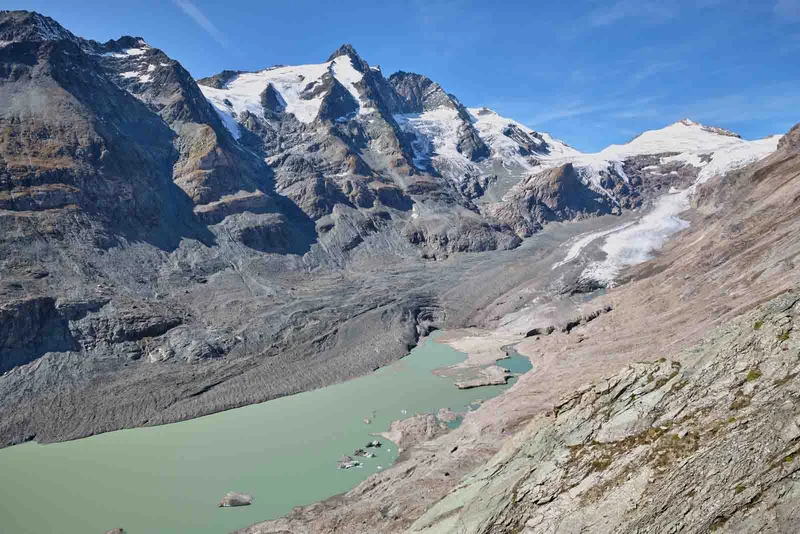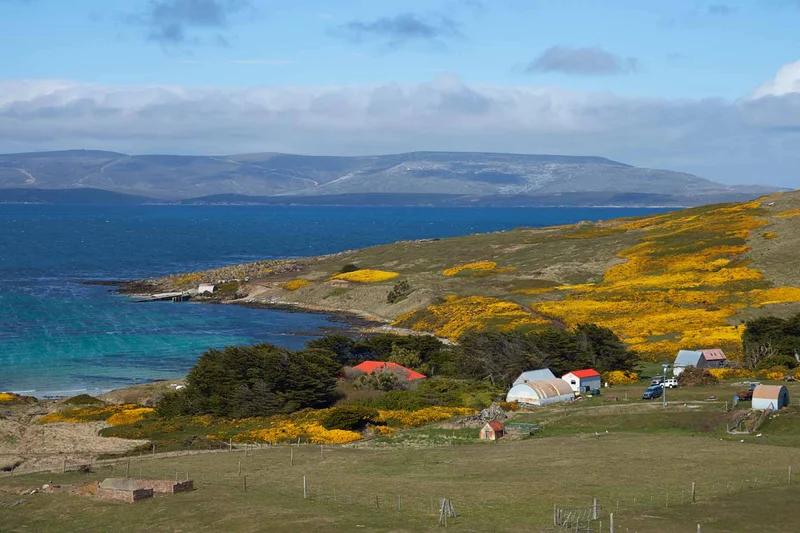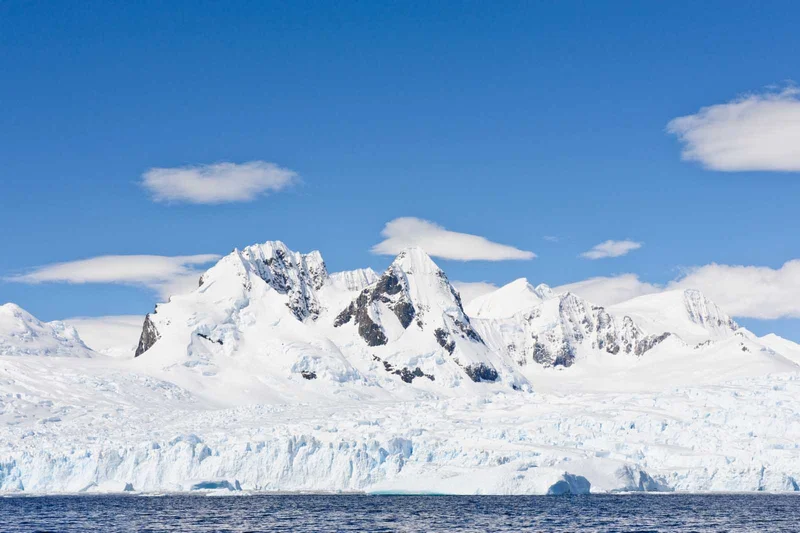
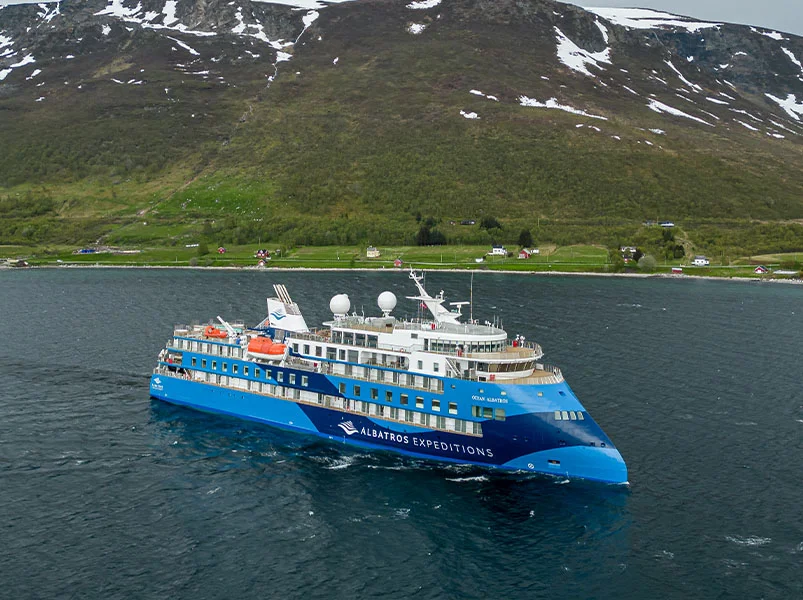
This 8-day Greenland cruise explores Disko Bay, Uummannaq, and the Eqi Glacier. You will learn about climate change at the Danish Research Station, see the glaciers retreating, visit the charming town of Uummannaq, land a Zodiac at Eqi Sermia, visit Ilulissat, the "Iceberg Capital of the World," and experience Inuit culture in Sarfannguit.
8 Day Artic Itinerary
Day 1: Kangerlussuaq, Greenland - Embarkation
We will board our chartered flight in Keflavik (Iceland) or Copenhagen (Denmark), bound for Kangerlussuaq, on the West Coast of Greenland.
Kangerlussuaq, Greenland’s only inland city, is located at the mouth of a 160km-long fjord with the same name. It was founded by American forces in 1941 as Sondrestrom Air Base/Bluie West-8. Kangerlussuaq, which was built primarily to serve the airport, retains an air of the Cold War, a nod to its American military usage before being handed over to Greenland's government in 1992. Kangerlussuaq, Greenland’s biggest air hub today, is a daily arrival of flights from Denmark as well as other parts of the country. The airport is ideal because of its stable climate, lack of fog, and the wide range of temperatures it experiences.
After arriving in Kangerlussuaq you will be taken to a small harbor located just west of the Airport, where the expedition ship is waiting at anchor. Zodiacs take us to the small port where the expedition ship is anchored. Enjoy dinner with a glass or champagne after the safety drill. We will then set out on an adventure along the 160-kilometer Kangerlussuaq Fjord.
Day 2: Sisimiut - Greenland's second city
We will then arrive at the vibrant city of Sisimiut. Greenland’s second-largest city is home to around 5,400 residents, making it one of the best places to visit. Paleo Inuit have been living around Sisimiut since at least 2,500 BC. They arrived in waves from Arctic Canada. The remnants of tents and turf huts from that time are scattered throughout the backcountry surrounding Sisimiut. This includes Tele Island which is a pleasant stroll from the harbour.
Count Johan Ludvig Holstein founded a colony in 1756 and named it Holsteinsborg. In the oldest part of Sisimiut, you can find townhouses from that era. The oldest one dates to 1756. The Blue Church was built in Greenland in 1775 and is now one of the culturally most significant buildings. It's a prominent landmark within the historical museum district.
Sisimiut, Greenland’s biggest export, is a hub for education and industry. Local factories are responsible for processing the majority of the fish that has been caught. Fish processing plants are located in Greenland's harbour. The plant is among the biggest and most advanced in the world. KNI's headquarters are located just beyond the harbour. This government-owned company re-supplies small communities throughout Greenland.
Sisimiut's bustling city center offers an insight into the daily lives of Greenlanders in the 21st century, when smartphones and seal hunting collide. Visit the Artists Workshop to purchase original artworks directly from the artists. Or, take a stroll through Spedjeso, and enjoy an exhibit at the cultural center. Te expedition ship will sail to Qeqertarsuaq as the evening approaches. We'll leave Sisimiut, and head for Disko Bay with its icebergs.
Day 3: Qeqertarsuaq, Disko Island
We pull in to a natural harbour that is beautifully protected, nestled beneath the 1,000 metre high mountains of Disko Island. The Danish name for the place is Godhavn, which means Good Harbour. In Greenlandic it's "Qeqertarsuaq", or "The Big Island".
Godhavn served as the capital for most of Greenland’s modern history. Godthab (now Nuuk) was responsible for Southern Greenland. The economic importance of Disko Bay was due to its whaling industry, which has been the dominant Arctic activity since the 16th century. Godhavn's political importance was lost when the whale-fishing industry crashed in the early 1900s. All government functions were moved to Godthab/Nuuk. The town had to reinvent itself and change its name in 1979 to Qeqertarsuaq. Qeqertarsuaq's main industries are fishing and hunting, but tourism has become increasingly important. In summer, there are daily ferry services from Disko Bay to the town, but in winter only helicopters can reach it from Ilulissat.
The sweeping basalt hills of Qeqertarsuaq are very different from the granite-covered rolling hills that characterize most Greenland. They also provide much more fertile soil. The area is a lot greener and more lush than the rest of Greenland, despite being located well above the Arctic Circle. This rich volcanic soil combined with the mild microclimate makes it a much better place to live. In summer, locals come from Disko Bay to collect herbs, mushrooms and angelica. The stunning black sand beach and rock formations also attract tourists from around the globe. Greenlandic in nature, the town is full of colourful homes and a museum. It also has a unique octagonal shaped church, built according to the Norwegian stave design. Qeqertarsuaq is a town with a rich history and many hiking trails. We then set off along the shore of Disko Bay to Uummannaq.
Day 4: Uummannaq - The Greenlandic Riviera
Uummannaq, a small town in northern Canada, is perched on a precarious ledge at the base of a huge mountain. The mountain here reaches 1170m vertically from the depths of ice, just like the rest of this area. Uummannaq (translated from Greenlandic to "heart-shaped") mountain is an iconic Greenlandic landmark and a climbing mecca that attracts climbers from around the globe. In 1763, Danish colonists founded the city on a flat area at the base of the mountain. Some of these original buildings can be seen in the harbour front area. Uummannaq is now known in Scandinavia for being the birthplace of Santa Claus. The small turf home that Santa Claus lives in can be found after a 2 to 3 hour hike.
The Inuit heritage of Greenland stretches back further than many other towns. Around the year 1600, there was a death in the region of a group Inuit women and their children (possibly due to a boating incident). The bodies were mummified by the Arctic winds and rain, which was protected them from both. They were buried in a rock cairn on the mainland, overlooking Uummannaq. In 1972, two brothers in Uummannaq rediscovered the mummies (possibly at the insistence of Uummannaq elders who have preserved the rumours about the site over the centuries). They were sent to Denmark to be analyzed before returning to Greenland where they now rest at the National Museum of Nuuk. Uummannaq's small museum did not have enough space to display such an important discovery, but it does house a number of artifacts, including clothing, from the site, as well as finds dating back before, during, and after the Qilakitsoq era. It also houses a cabinet full of curious items from Uummannaq's short mining boom.
Uummannaq is an energetic little town. Locals will be selling their handicrafts on the town's grassy square. Others sell their catch at the fish market. Fishing boats will be anchored in the town square to lure halibut or hunters can load their fjordlands with supplies for hunting expeditions.
Be sure to be on the Ocean Albatros outer decks when we sail out from Uummannaq. The deep blue, iceberg studded waters and dramatic mountains surrounding the city provide some of Greenland's best views. This stunning area is not called the Greenlandic Riviera for nothing. It has a quiet microclimate with constant summer sun.
Day 5: Eqip Sermia Glacier
We return from Uummannaq to Disko Bay and sail toward Eqip Sermia.
Eqip sermia, a descriptive Greenlandic term meaning "the Glacier At The End Of Fjord", is relatively small compared with other glaciers in Greenland. However, it still represents a vast river of Ice flowing from the Greenland Ice Sheet. The glacier is one of the busiest in Greenland, with ice falling off almost continuously. Ocean Albatros' comfortable decks offer the perfect place to watch the ice cataracts fall.
We will then reposition ourselves slightly to the south during the night towards Ilulissat. This is the biggest city in Disko bay and the Iceberg Capital of the World. We may reach Ilulissat just in time for the Icefjord to be illuminated by the sunset, depending on local conditions.
Day 6: Ilulissat - Optional AirZafari ride or boat trip to the Ice Fjord
It's all here. Greenland is a popular destination for tourists from around the globe. Ilulissat, which translates from Kalaallisut as "icebergs", is known around the globe as the "Iceberg Capital of the World". No other city in the world has such an amazing natural environment.
Ilulissat Icefjord is located within walking distance of the harbour. It's Greenland’s most popular site. Ilulissat Icefjord is 70km long, stretching from the outlet of Disko Bay in the vicinity of Ilulissat to the Sermeq Kujalleq Glacier. It's choked with icebergs the size and density that you could walk to the opposite side. It is the largest glacier outside of Antarctica. The glacier drains 13% of Greenland Ice Sheet and produces 10% of all ice found in the Northern Hemisphere. The Ilulissat Icefjord has been designated as a UNESCO World Heritage Site because of these mind-boggling statistics and the breathtaking scenery.
Ilulissat is the third largest town in Greenland, with more than 4,500 residents. It has also become the tourism capital of the country, as it boasts more hotel rooms than Nuuk. Legendary Arctic Explorer, Knud Raasmussen, was born there, and the museum now occupies his childhood house. Ilulissat, Greenland’s third-largest town with over 4,500 residents, is Greenland’s tourism hub, boasting more hotel rooms that Nuuk. Visitors can enjoy the fresh seafood from local fishermen served at the cafes, restaurants and shopping. The summers are usually dry and sunny in the city. There is a wide range of hiking trails around Icefjord that can be adapted to all levels.
You will be able to take a trip on a boat with the local captain (optional - fee applies). This journey lasts about 2 1/2 hours, and it is the most effective way to see the Ilulissat Icefjord. There is an option to take a fixed-wing plane flight over the Icefjord if a boat trip or hike are not enough.
The price of the tour does not include the cost of boat or flight excursions. Please refer to Price Information.
Day 7: The settlement of Itilleq
Itilleq is a settlement nestled at the foothills and along the fjords that line the backcountry of central Greenland. Itilleq, located just north of Greenland's Arctic Circle is one of many small villages that dot the coastline. It is located in the Aassivisuit Nipisat UNESCO World Heritage Site. This site was inscribed because of its ancient Inuit hunter heritage.
The lifestyle has remained largely unchanged since Greenland's Inuit arrived. Although the hide tents and turf houses have been replaced with colourful, modern homes, there are still many similarities between the two. Local highways include the water and ice. The sea and tundra have continued to feed the locals for many thousands of years. Arctic chars, muskoxen, and reindeer are common catches.
Itilleq's residents are still very much in touch with the modern world despite their ancient history. They have smartphones, fast wifi, and satellite television. Itilleq's people are proud of their heritage and they continue to develop their culture in the fast-paced modern world. The locals love to showcase their beautiful town and welcome visitors with the warm Greenlandic Hospitality.
We will then head south, and we'll enter the 160km long Kangerlussuaq Fjord.
Day 8: Kangerlussuaq, Greenland - Disembarkation
We will be sailing up Kangerlussuaq Fjord, a 160 km/100 miles long fjord. We will say goodbye to our ship crew and Expedition Team before we take the Zodiacs ashore.
Kangerlussuaq is relatively isolated, compared to other Greenland regions, due to its military past and current role as a major air hub. Kangerlussuaq offers cultural activities, but the natural beauty of the area is what you'll remember most. This small airport town was built by the American Military in the 1950s and has kept some of the Cold War feel. We will board our flight back from Kangerlussuaq to Reykjavik in Iceland, or Copenhagen in Denmark, at the end of your Arctic adventure.
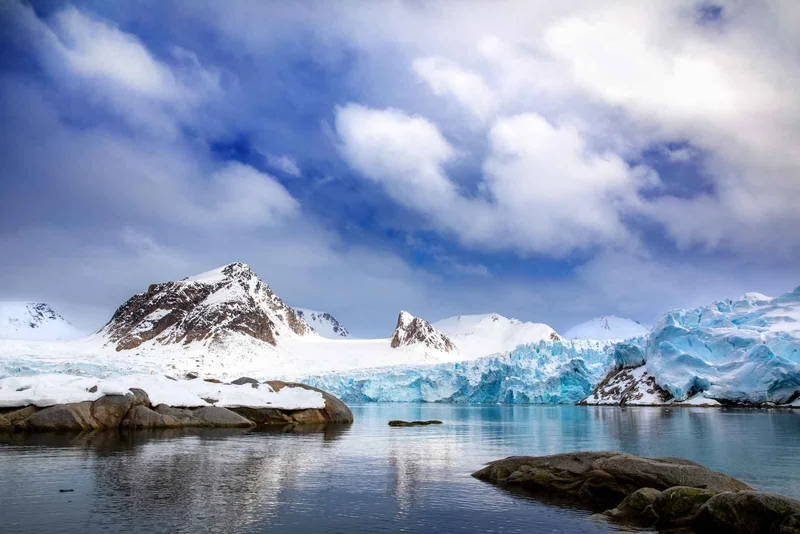
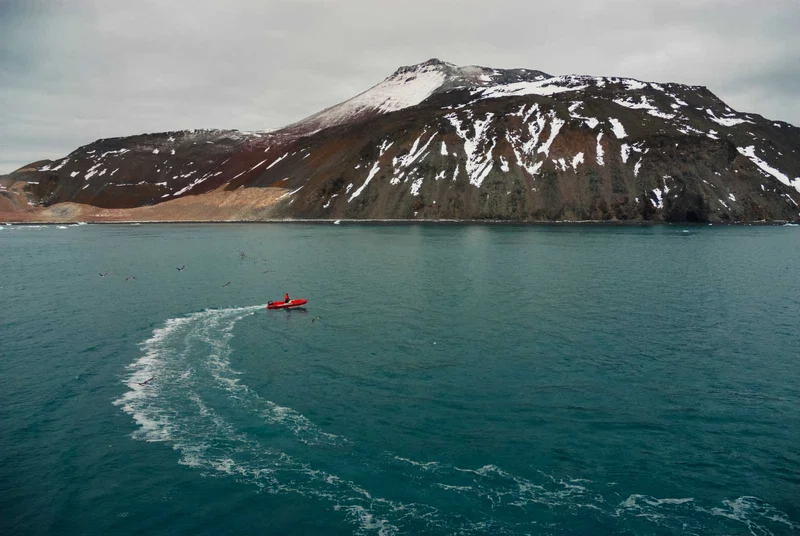
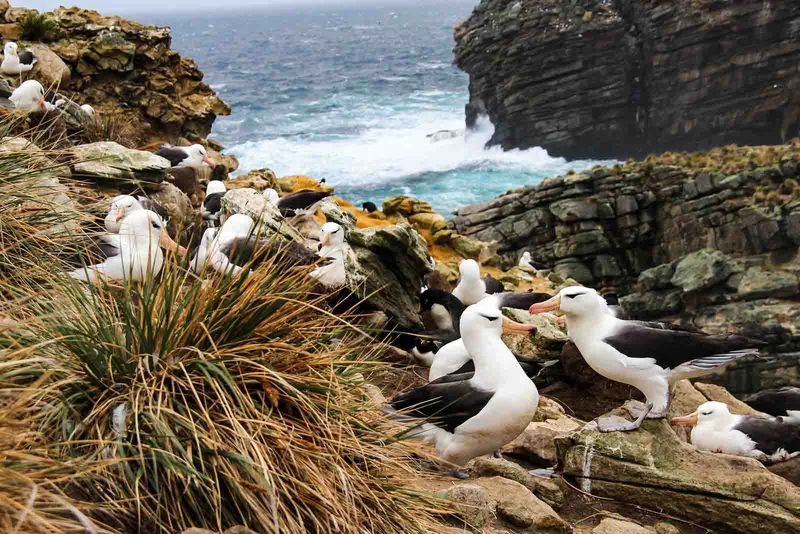
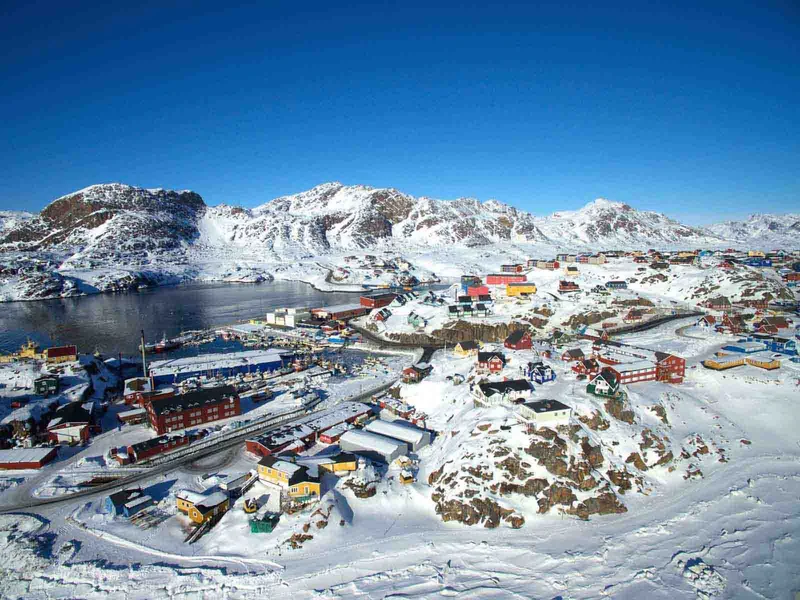
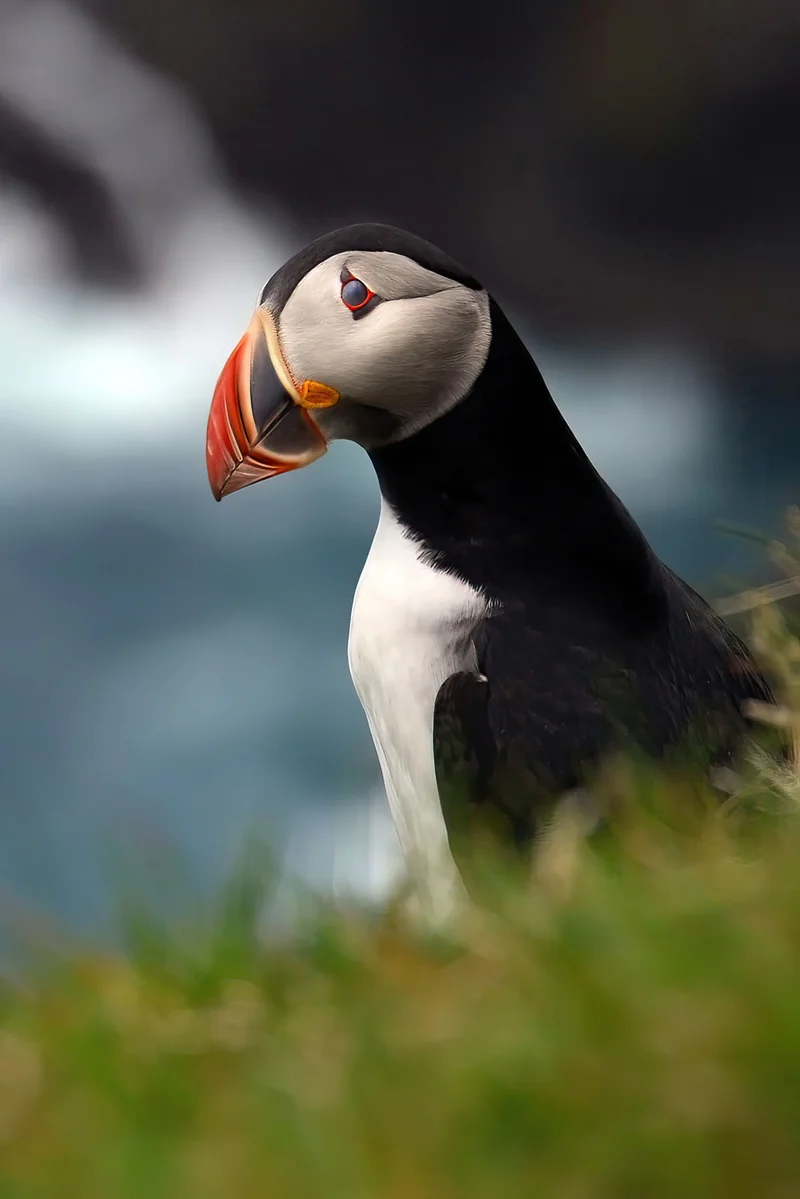
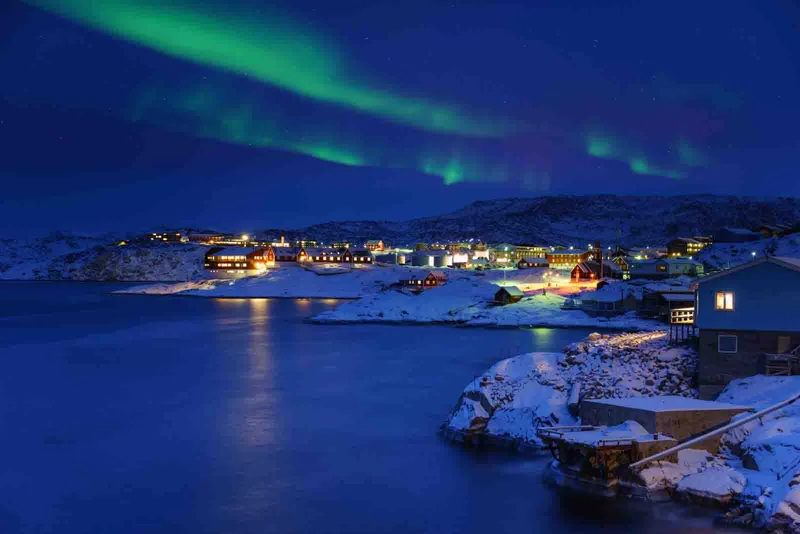
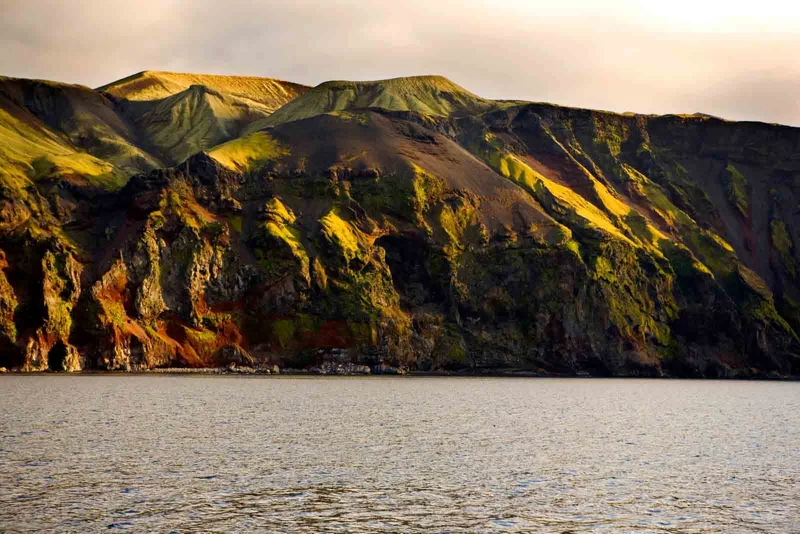
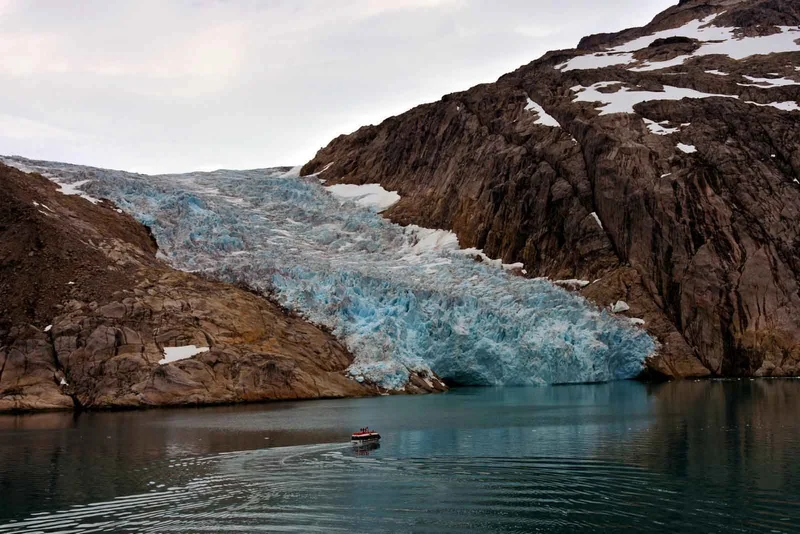
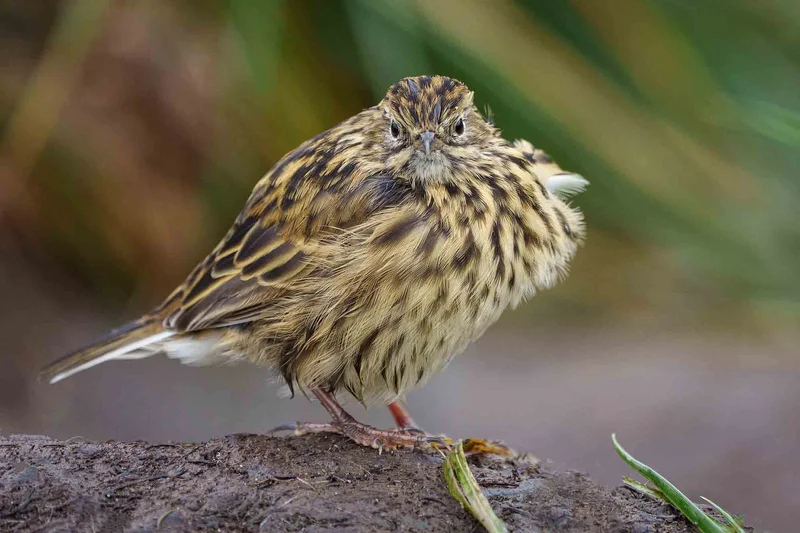
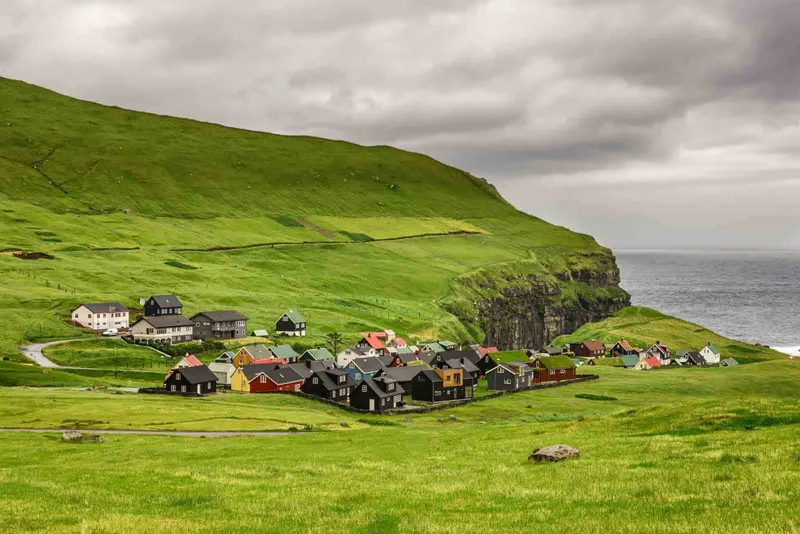
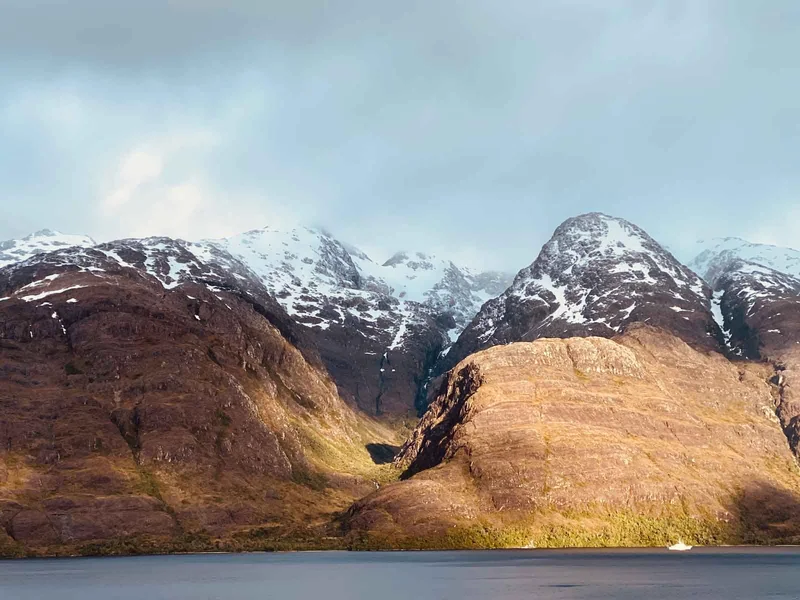
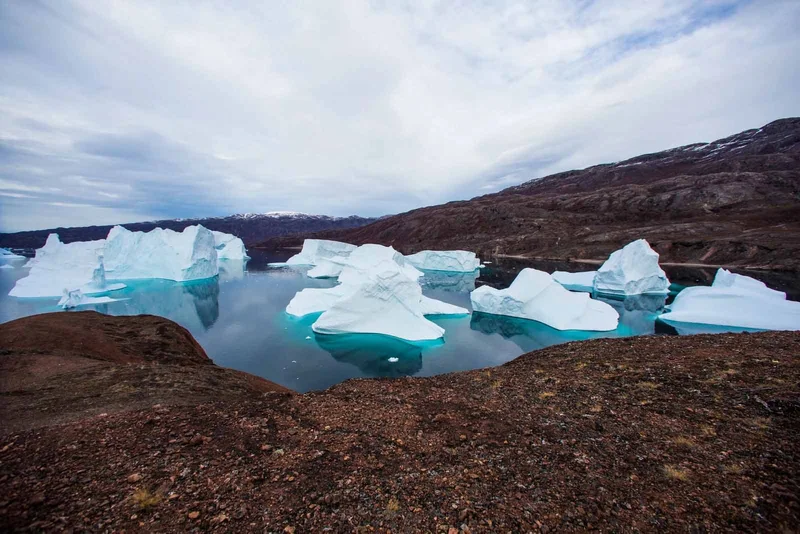
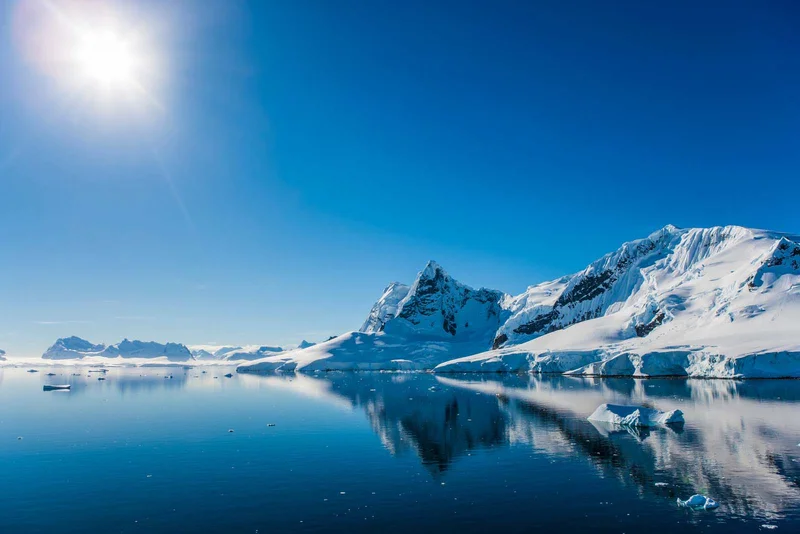

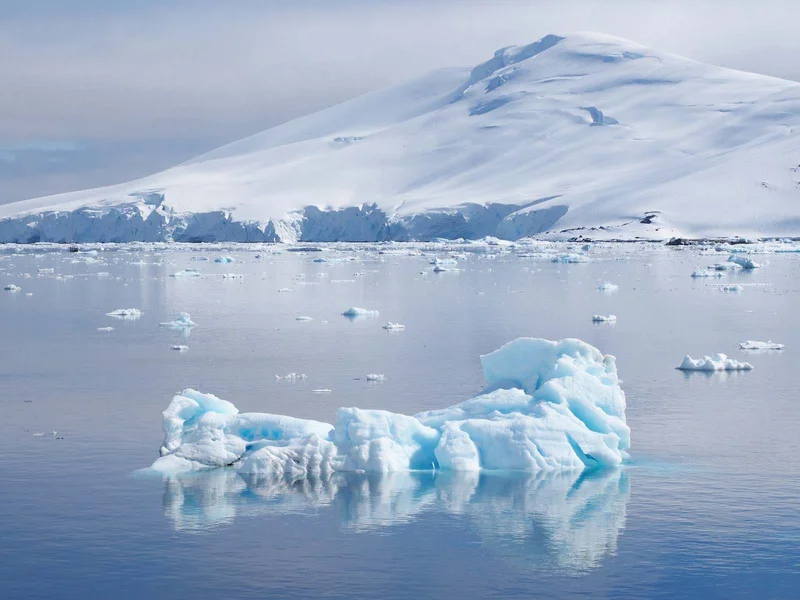
8 Day Artic Itinerary Includes
- Embarkation shuttle transfer to the vessel from Ushuaia city centre
- Shuttle transfer after disembarkation from the ship to Ushuaia city centre or airport
- All Zodiac landings and excursions, as per itinerary, guided by our Expedition Team
- Expedition parka
- Rubber boots loan scheme
- Briefings and lectures by our Expedition Leader and Team
- English-speaking Expedition Team
- Full board on the ship - breakfast, lunch, dinner and snacks
- Complimentary house wine, beer and soda at dinner (selected labels and brands, served at our a-la-carte dinners)
- Free tea and coffee available 24 hours
- Taxes and landing fees
- Special photo workshops
- Welcome and Farewell Cocktail Parties
8 Day Artic Itinerary Does not Include
- Extra excursions and activities not mentioned in the itinerary
- Single room supplement and stateroom upgrades
- Meals not on board the ship
- Beverages (other than coffee and tea)
- Tips for the crew (we recommend USD 14 per person per day)
- Personal expenses (e.g. Albatros Polar Spa services, Albatros Ocean Boutique purchases)
8 Day Artic Itinerary Highlights
- Visit the Danish Research Station and learn about climate change
- See the glaciers retreating in Disko Bay
- Visit the charming town of Uummannaq
- Land a Zodiac at Eqi Sermia, a massive glacier
- Visit Ilulissat, the "Iceberg Capital of the World"
- Experience Inuit culture in Sarfannguit
Itinerary Map
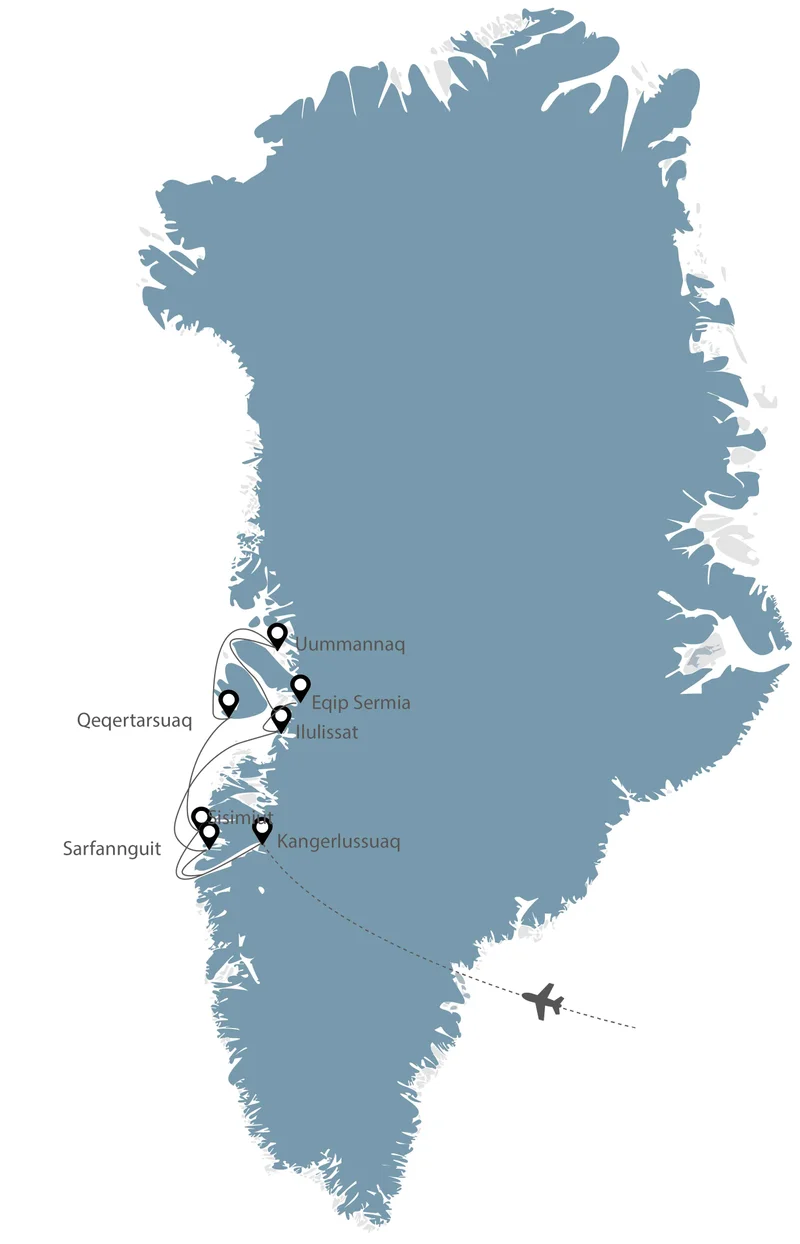
8 Day Arctic cruise activities
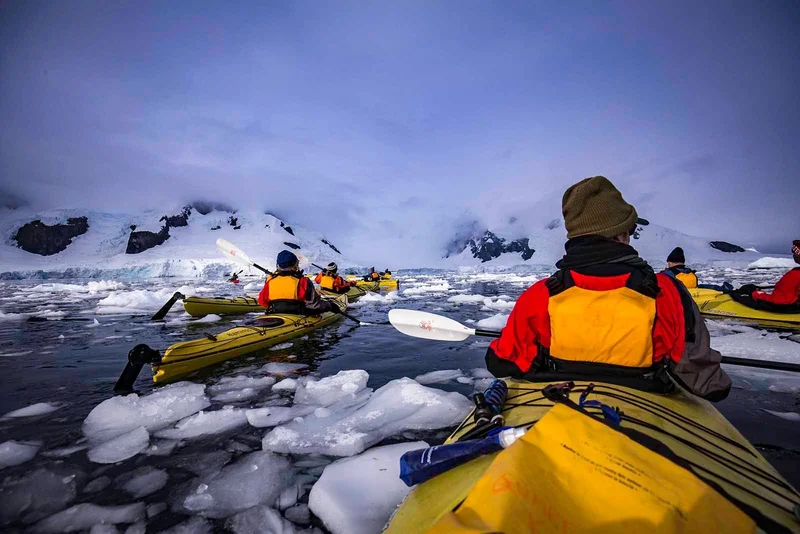
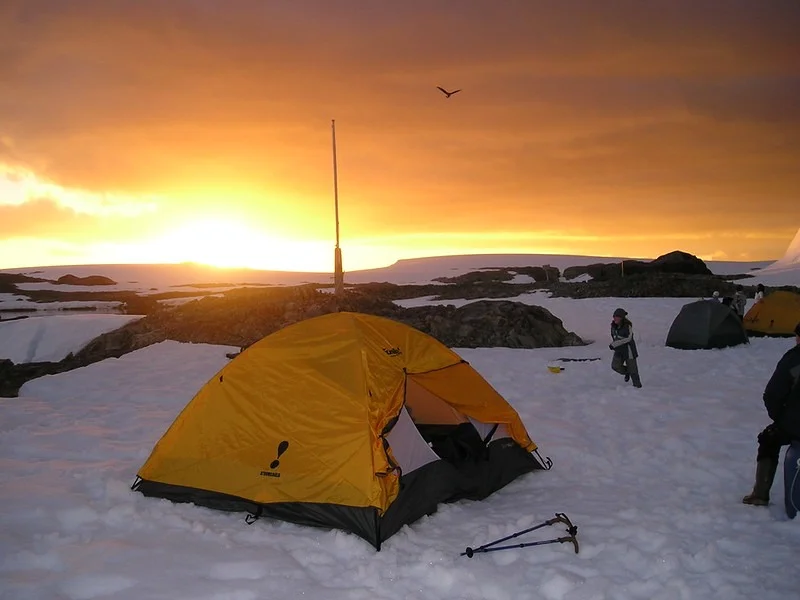
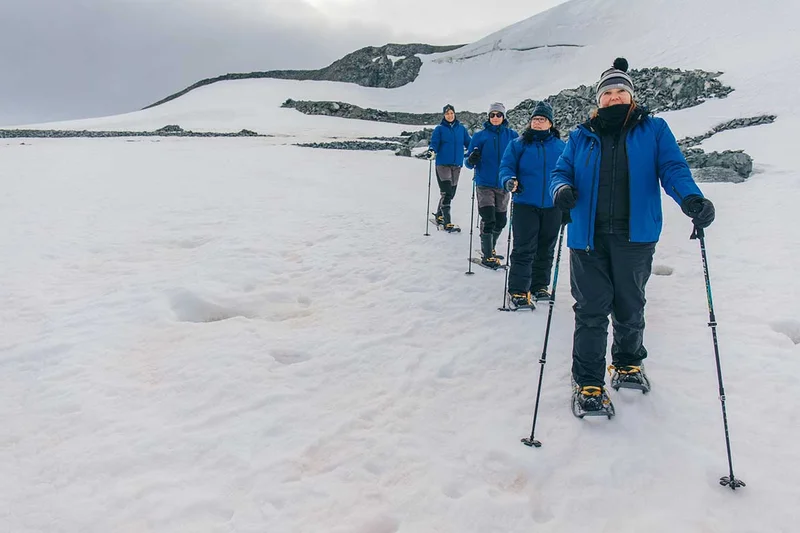
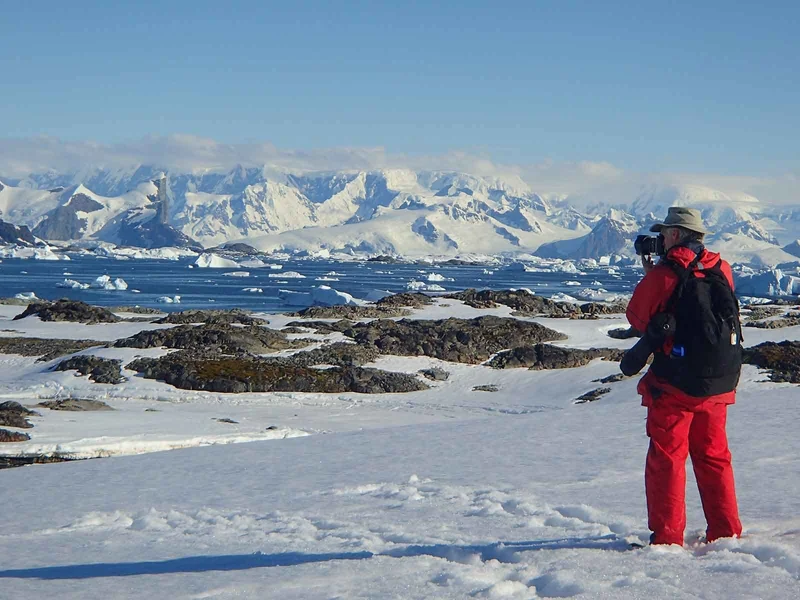
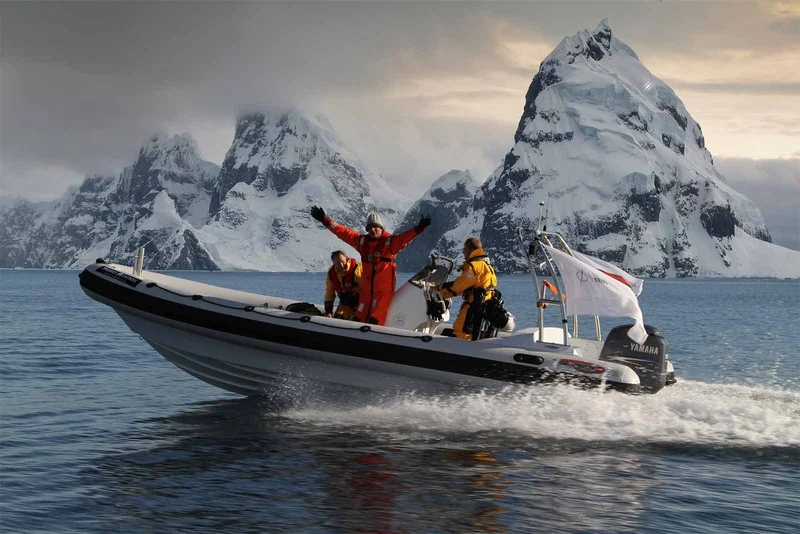

Animals you might see on this itinerary
Why travel with us?
Would you like to know why booking with us is the best choice?
Discover the BenefitsSimilar Itineraries

